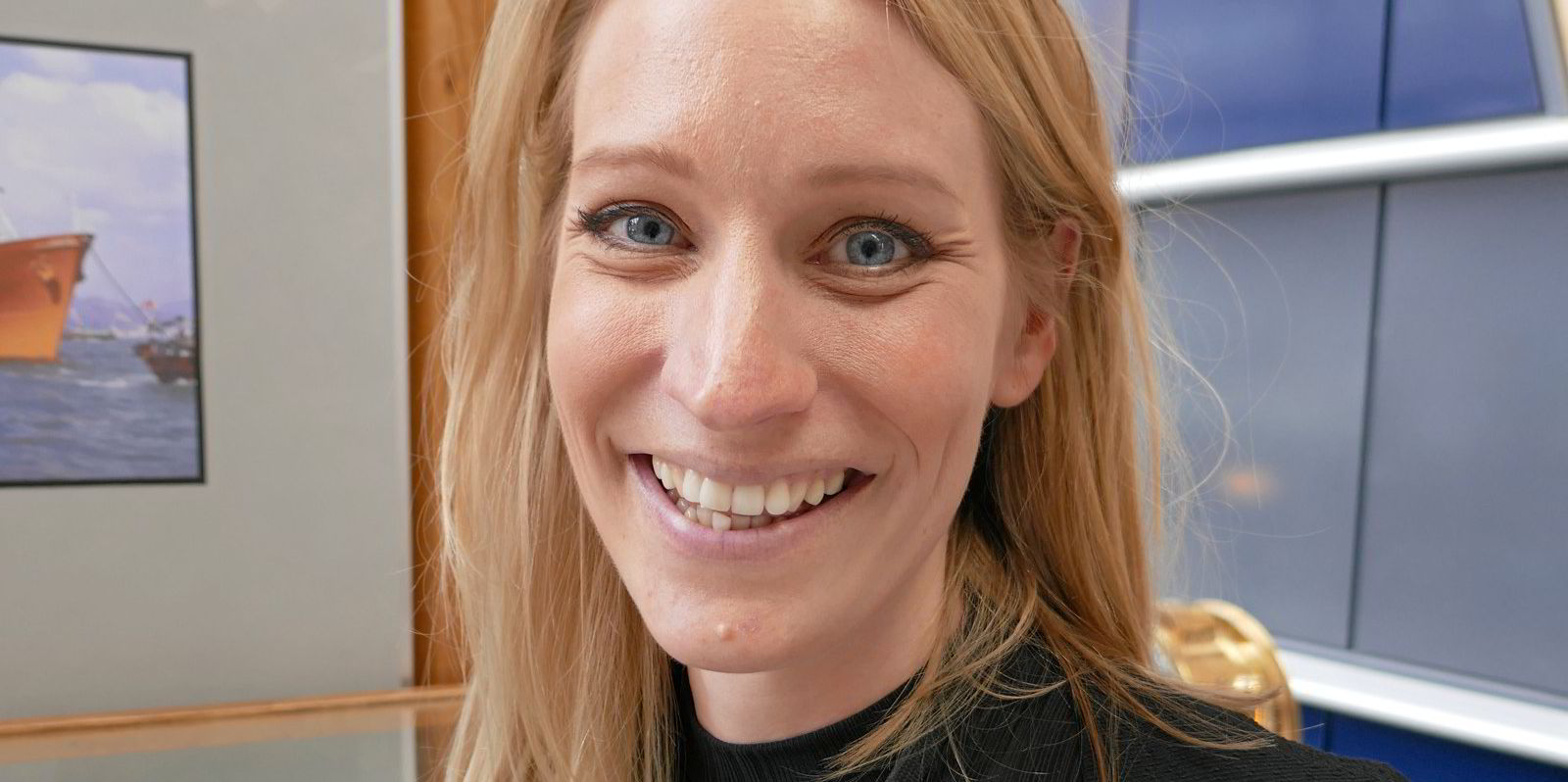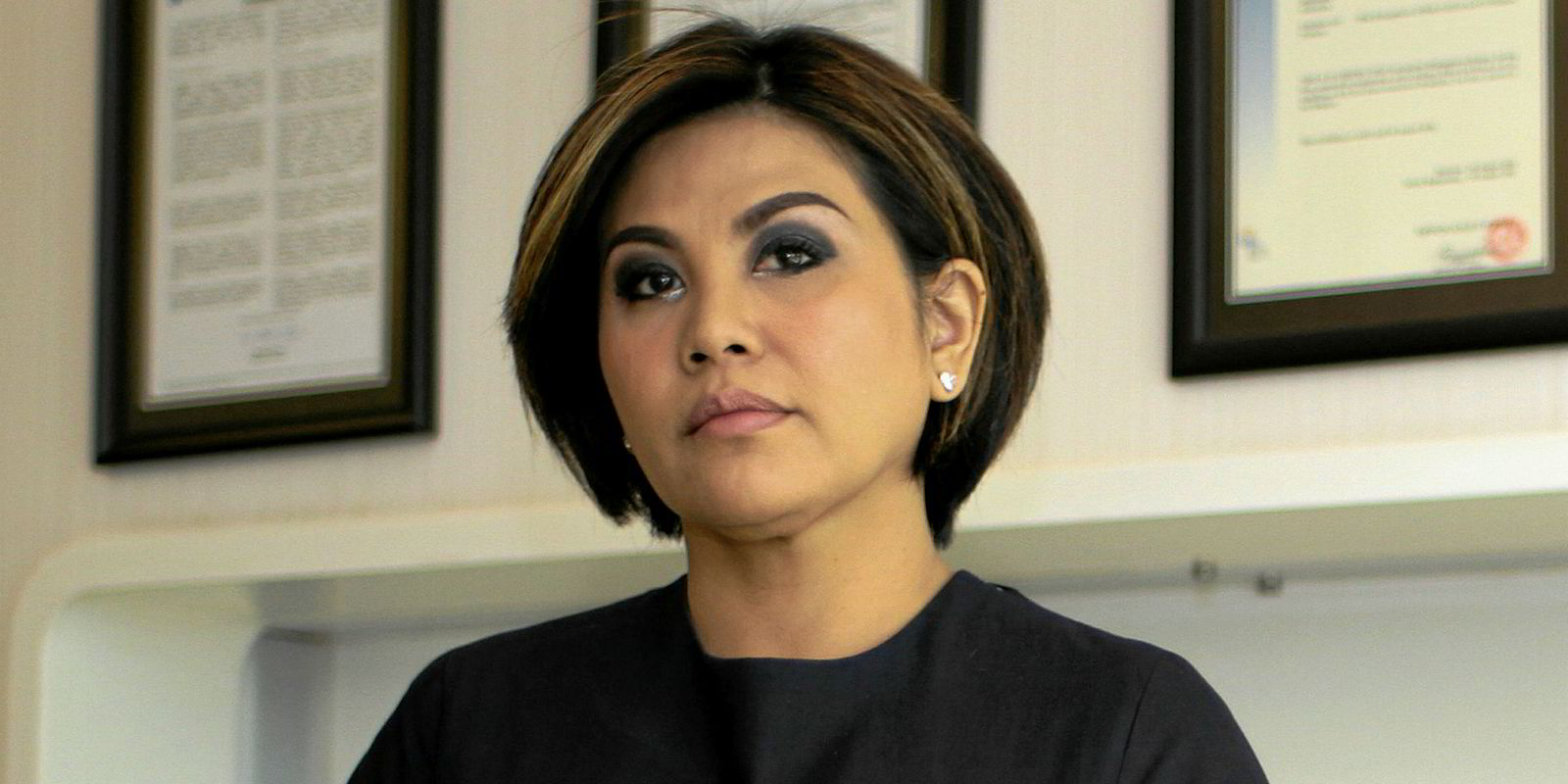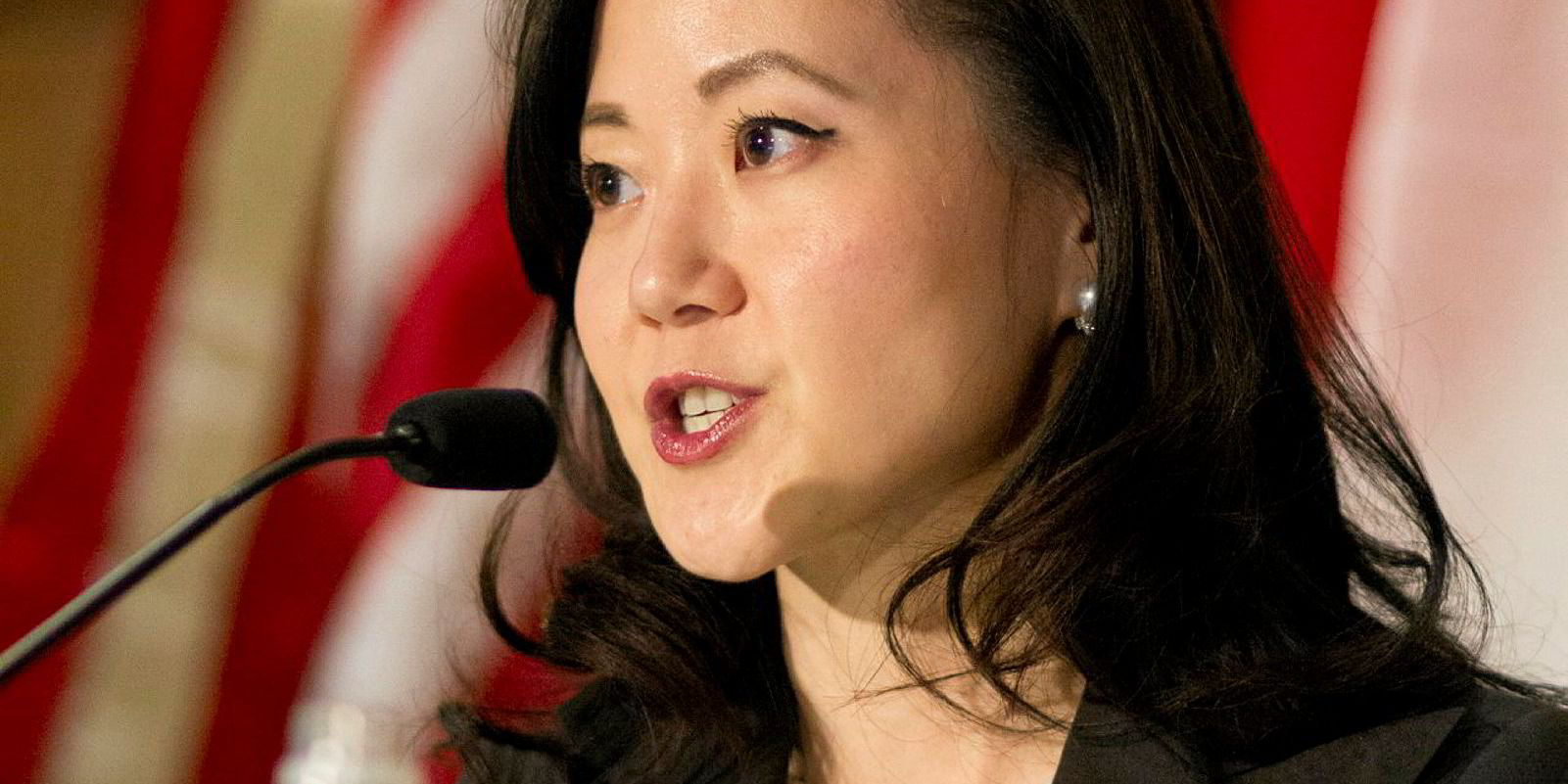Norway’s high global standing in gender equality should come as no surprise, given its consistently excellent rankings in world indices for prosperity and human development.
It took second place for gender development out of 144 countries last year and first place out of 188 countries in 2016, and had the highest gender-parity score out of 95 countries in 2015, according to studies by the World Economic Forum (WEF), the UN Development Programme and the McKinsey Global Institute (MGI), respectively.
But what do these top marks actually mean for women working inside the male stronghold of shipping?
TW+ sat down with seven women, all colleagues at Wilh Wilhelmsen in Oslo, to hear their thoughts on gender issues and whether the daily reality of Norway lives up to its high scores.
Along with three Norwegians, the group included four women with backgrounds from Australia, the Netherlands, Slovakia and Egypt, giving a unique comparison of their experiences in Norway across a range of nationalties.
Kine Ryberg Strupstad
The 30-year-old supply chain project and implementation manager at Wilhelmsen Ships Service has been taking on more responsibility and ever-larger projects since starting on the ground floor at the company five years ago.
Along with 17 male trainees in a programme run by the Norwegian Shipowners’ Association, Strupstad was one of six young women who were all well aware of the industry’s reputation.
“We talked about shipping being in many countries a traditional industry with a lot of men and maybe a bit of a macho culture, depending on where you are located. But I think all of us were kind of gutsy. We were just following our dreams,” she says of her days in the programme.
“It is not something I think about on a daily basis now but, of course, it does concern me. Being a woman, I want to be a good representative for other women and especially younger women. I want to make it easier for them to come after me.”
The clear consensus among these women is that the gender challenges have been tangibly reduced, even if they have not been eliminated, in Norway, which the WEF rates as 83% gender-equal — the second-highest rating in the world. However, it still falls short of parity, representing 17 percentage points of measurable discrimination, which is not theoretical but felt in practice by women in such life-defining terms as lower pay.
In terms of hourly “wages” last year, women in Norway earned 87% of what men did — but with “income” figures, which include benefits, bonuses and capital income, the female share fell to 69% of the male, according to government bureau Statistics Norway.
This disparity is partly explained by work type, as career choices in areas such as health care and education put many women into the lower-paying public sector. The government-funded Centre for Research on Gender Equality (Core) says career choices account for 45% of the pay gap and the rest is “unexplained”.
Just as Strupstad says she aims to set the best example, the other Wilhelmsen women also indicate that one of the most productive responses to gender discrimination is to chip away at the perceptions behind it by maintaining their own professional excellence — with a smile.
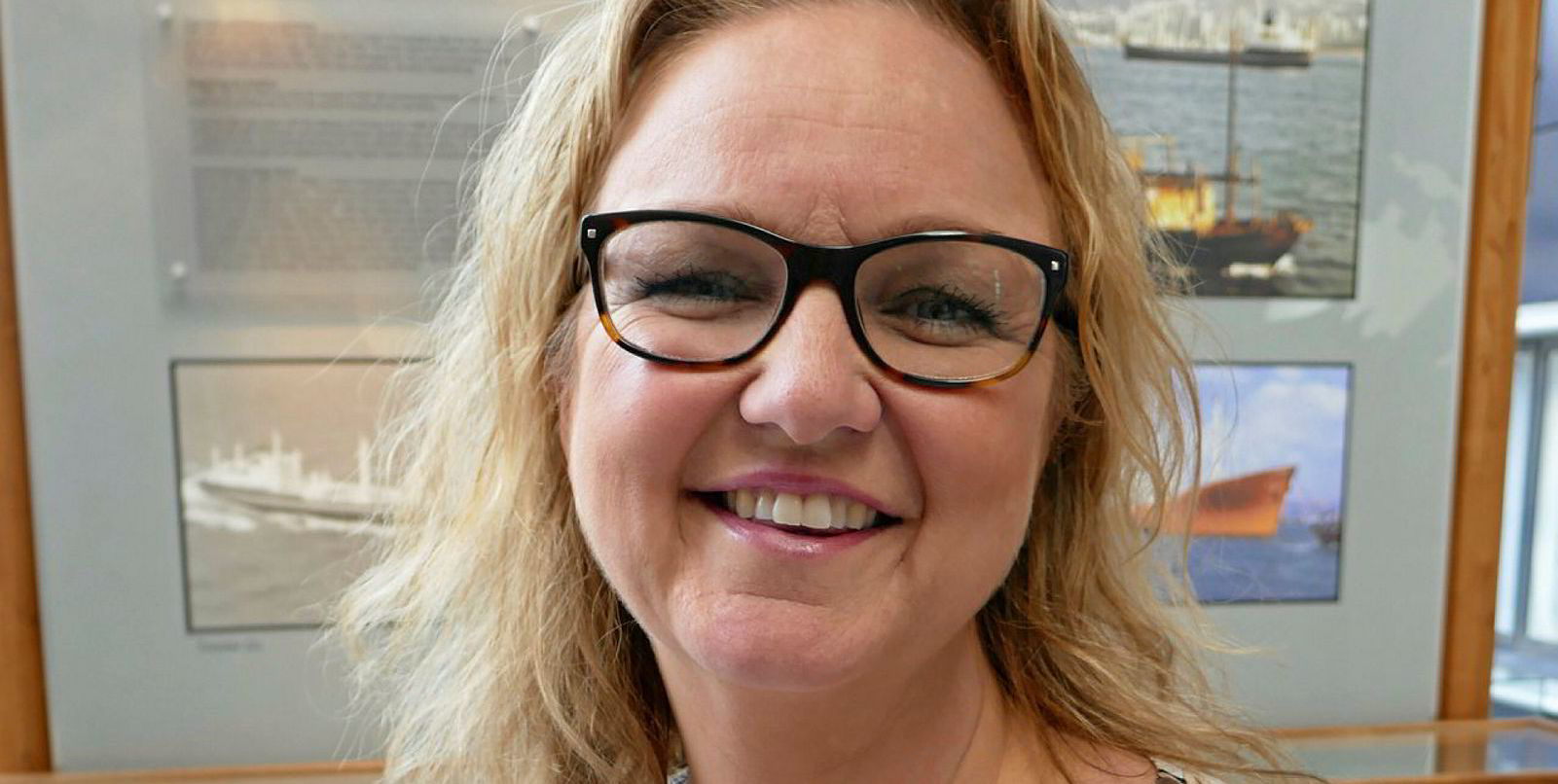
Marthe Romskoug
Romskoug, 45, general manager at Wilhelmsen Insurance Services, is among those who strongly suggest that, for the business at least, women should strive to set the best examples rather than crusading aggressively.
Romskoug has been with Wilhelmsen for 26 years, having started at 19 as “the only girl” in the insurance office. She has seen dramatic improvements over the years but says serious problems persist.
Marthe Romskoug is a dyed-in-the-wool marine insurance woman: her father had her working in his office by the age of 12. Well-known insurance man Sigmund Romskoug, a partner at Arvid Bergvall and then a director at Sedgwick Bergvall after selling the firm, received an urgent call one day from Wilhelmsen. He was told the company was in dire need of in-house insurance staff and was asked: “Don’t you have a daughter?” Nineteen-year-old Marthe took that temporary job 26 years ago and now is general manager of what became Wilhelmsen Insurance Services.
“Especially in some of the countries I work with in the Far East, you have these great, great women. I mean, they’re so skilled but they’re never allowed to be number one. They’re always second. They’re not even allowed into the meetings. Up until 10 years ago, I had to bring a man to get into those meetings,” she says.
“Now they respect me because I’ve been working with them for so many years. They include me in the meetings and dinners, but when they continue after dinner, if I bring a man, they will take him and leave me out.
“I have younger girls working for me. And I’ve tried to tell them: ‘You can try to fight this because you don’t like it, but the only thing we can do is prove that we are as good as a man’. When we meet these cultures, we need to try to build up respect based on our knowledge and skills, because we can easily destroy so much, not only for us as a company, but also for the women working there.”
The MGI study of 95 countries firmly links gender equality in society with equality in work, pointing out that “the latter is not possible without the former”. There are virtually no examples of an unequal society creating an equal working environment, the institute says.
Individual experiences are shaped by a woman’s employer, and not all Norwegian shipping companies are guided by the same moral compass.
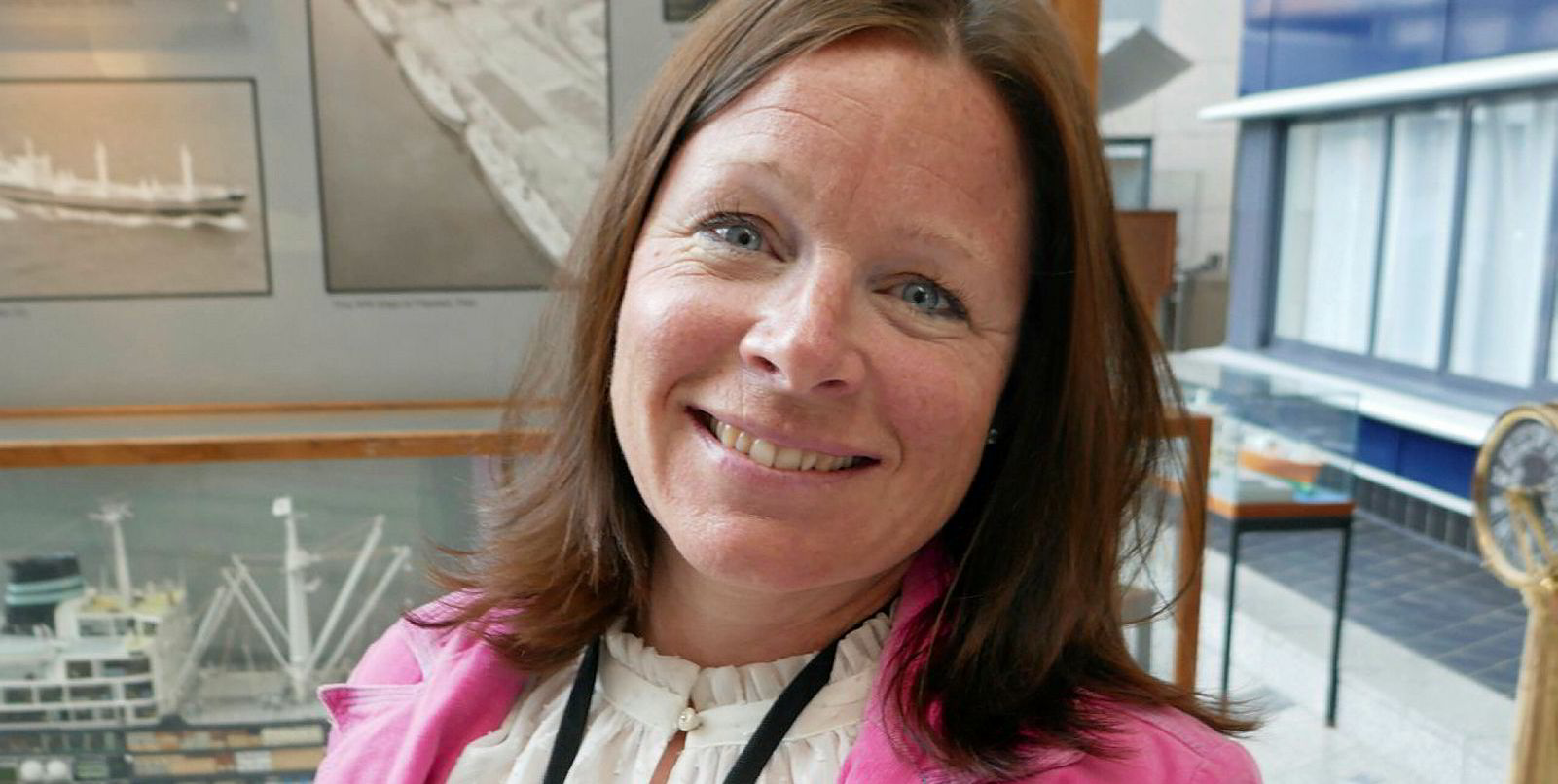
Benedicte Teigen Gude
The senior vice president of human resources and communications at Wilh Wilhelmsen Holding believes gender equality is not an issue in isolation but part of a range of ethical responsibilities for all companies.
“I find that Wilhelmsen is focused so much on achieving the right results in the right way, and that is important to me, because working for a reputable company with very high standards echoes my ethics,” says Gude, 47.
Benedicte Teigen Gude grew up being a part of shipping discussions at the dinner table, as her maritime father liked to challenge her intellectually. She remembers with pride the first time she won a game of Trivial Pursuit with her father, Sigurd Gude, who was a seafarer until 1972, a vessel surveyor and then acting director-general of the Norwegian Maritime Directorate. But Sigurd’s first humble job with Wilhelmsen was in 1961, as a table waiter at the company’s centenary celebration. Benedicte joined Wilhelmsen in 2005 and ended up being in charge of its 150th- anniversary celebration.
“There are a lot of shipowners that I would not be able to work for, even in Norway, and I have declined a couple of offers over the years. It all goes back to ethics: the way they treat people, the way they do business, not just from a gender point of view, and whether they are open for change and actually want to make a difference for the better. There are a lot of different factors.”
Gude is also one of the rarer shipping examples, since she is part of group-level management at her company, one of a five-person executive team.
The UN Conference on Trade & Development cites data from 2016 for global shipping showing that female onshore participation was focused around 75% on administrative support. This fell sharply higher up the ladder: 37% among salaried professionals, 17% for managers, 12% for directors and 9% for executives.
Of the 200 largest Norwegian companies in all sectors, women led only 11.5% of the boards and held 7.5% of chief executive spots last year, according to Core.
Similar statistics for domestic shipping are harder to come by. TW+ checked the Oslo Shipping Index and its 23 companies, and found one chairwoman, one female chief executive, three female chief financial officers and a total of 14 women among 100 male executives. That represents 4.35%, 4.35%, 13% and 12% respectively, in this small sample.
Alongside the three Norwegians in the group, the four international women bring insights into what the percentage differences in the WEF rankings can mean in real life.
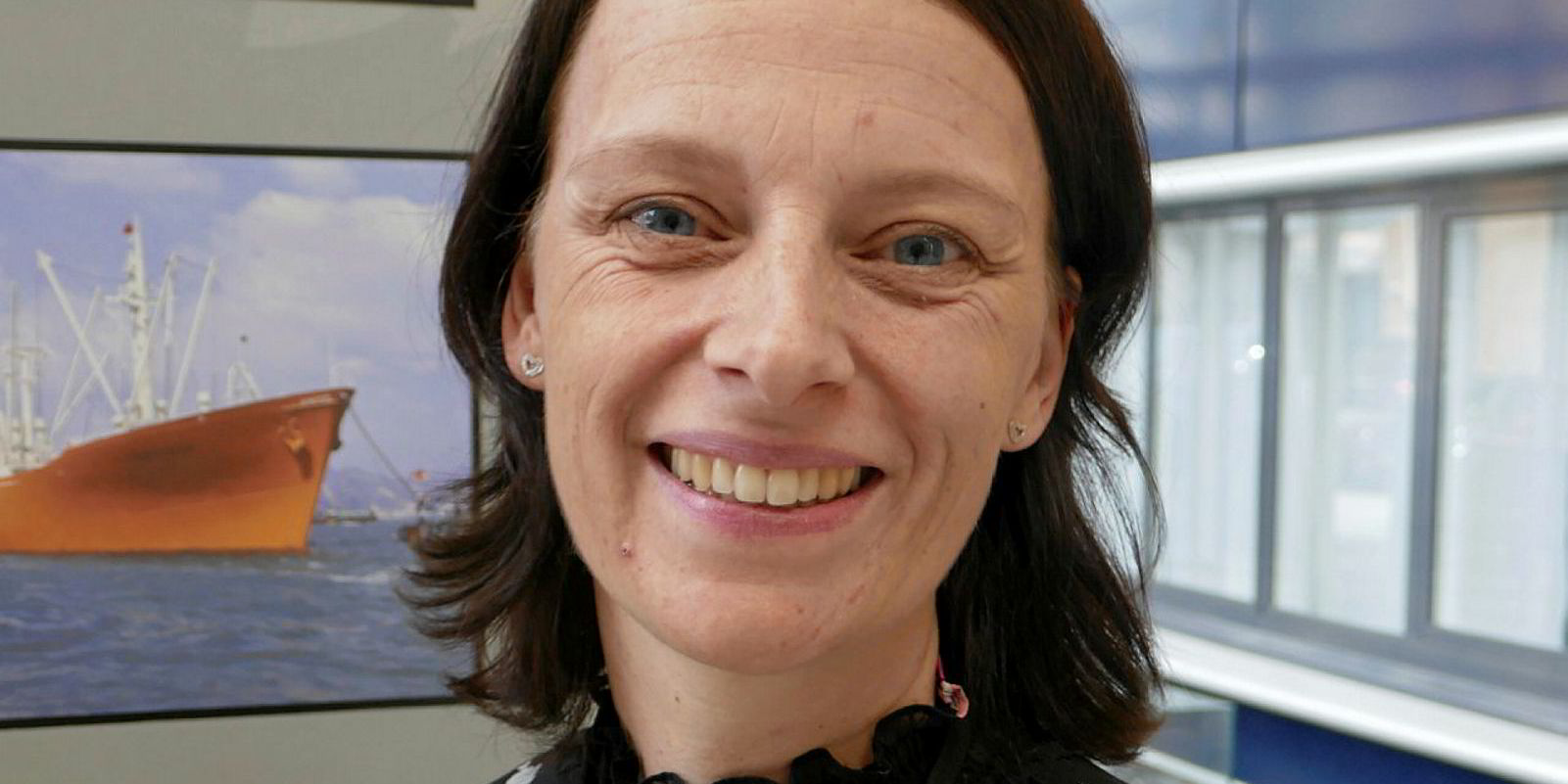
Leona Geilvoet
Geilvoet, who is global human resources and organisational development director at Wilhelmsen Ships Service, grew up in a village of 2,000 people just outside Rotterdam. Compared with Norway’s WEF 83% gender equality score, the Netherlands is ranked 32nd with 74%.
Leona Geilvoet grew up in a village outside Rotterdam. Her family had no particular maritime connections, other than the strong shipping traditions in communities around the huge port. But her father would often take her to watch the vessel traffic and she had her own personal view of the port from her bedroom window. As a young girl, she liked to watch “all the bright lights, activity and ships in the distance” and always knew she wanted to be a part of that.
Geilvoet, 43, who has been at Wilhelmsen for 12 years, says she “absolutely” grew up thinking she could be anything she wanted and never experienced any sort of discrimination.
“Even though I feel that maybe the Netherlands is more liberal, I do feel that Norway is more focused on equality,” she says.
As an example of how this can work in practice, she points to kindergarten. In the Netherlands, it is still common for society to expect new mothers to take care of children and work only part-time, she says, but her three-year-old daughter goes to kindergarten five days a week in Norway, like all kids.
“Personally, I feel that Wilhelmsen is doing a pretty good job on gender equality,” Geilvoet says. “Even though I have regularly been the only woman sitting in a management team, I have never felt in any way that I have been stopped or overlooked or treated differently.”

Veronika Aspelund
Aspelund, 40, grew up in a small town in Slovakia, which the WEF ranks 74th with 69% gender equality.
After studying in Vienna, where she met her Norwegian husband, she was headhunted for mooring-rope company Timm, which was acquired by Wilhelmsen, where she is now acting business manager for ropes at Wilhelmsen Ships Service.
Aspelund was around 11 years old at the time of the Velvet Revolution in 1989, so she grew up in the communist system of the old Czechoslovakia and then witnessed the Velvet Divorce in 1993, when Slovakia became an independent state.
“During the communist time everybody was working, all the women and men, so I grew up without thinking about gender,” Aspelund says. Her family provided many strong women as role models, and she adds: “I was never thinking that I couldn’t achieve the same as a boy.”
Looking back, her perspective has changed after 14 years in Norway. As one example, she says Slovakian women get opportunities, but mothers are expected to stay at home.
“When you go to a place like Norway — where equality is much better, not equal but much better, where the women’s movement is so strong that men are actually taking care of children — then you suddenly see things differently,” Aspelund says.
“Work is important for me. You can never compare it to having a family and children. I have two children and they are the most important thing in my life, of course, but I want to have the same opportunities in my working life that my husband has.
“I feel definitely that Norway is one of the leading countries for equality, and when it comes to shipping, as well, you can see more women working in Norway than in other places and also at higher levels. I still would like to see even more.”
In working life, Aspelund has encountered a number of problems. One was when she was “still in saleswoman’s shoes” and walked into meetings as the only woman.
“The technical superintendents and technical departments were always only men. I experienced very often that when I went into a meeting, I could just see the looks on their faces. They would be five or six men with experience from onboard and ex-captains, and then they saw me, a woman with high heels and not in dark suit and tie. Sometimes I thought some of them would just leave the meeting.
“I knew that it was up to me to show them that I really knew what I was talking about. In most cases I ended up getting a good reaction but I had to work harder than if I walked in as a man.”
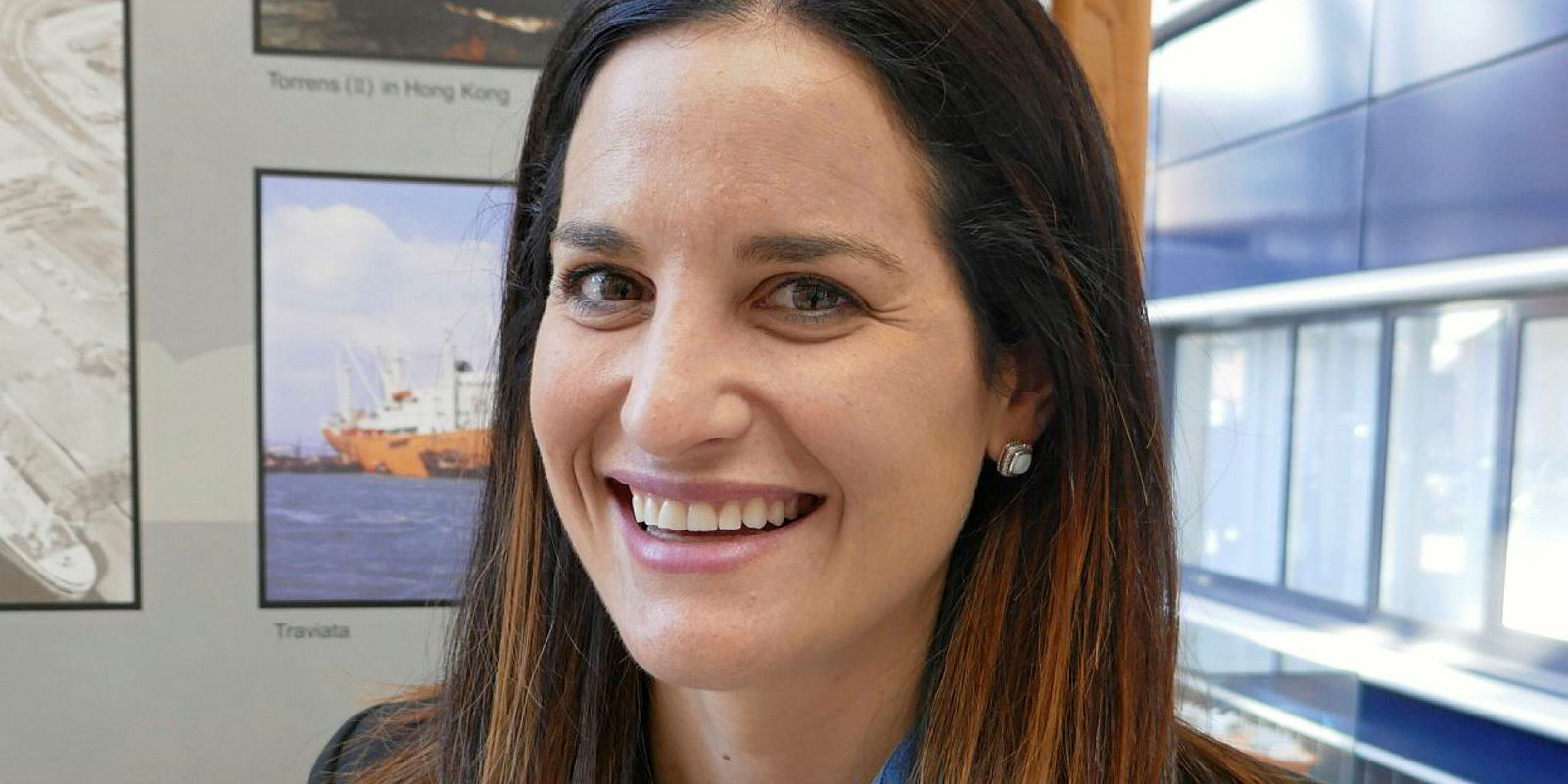
Jennifer Stene
Stene, 35, IT director at Wilhelmsen IT Services, has a Colombian mother but was raised in Egypt because her American father was working for BP in the oil & gas industry there. The WEF ranks Egypt 134th with 60% gender equality.
While earning her MBA in Colorado, Stene met her future Norwegian husband, but, long before that, her 12 school years were centred on Cairo.
Stene has fond memories of Cairo and looks forward to showing her two young daughters the city some day, but her life then was one of sharp contrasts.
“I was raised in a country where suppression of women is extreme, and I was exposed to that on a daily basis,” she recalls.
“I grew up very exposed to ‘you’re not good enough if you’re a woman’ and you’re whistled at on the streets. I mean, this was my childhood. What worked for me is that my intimate environment was not the same.”
Stene says she has always gravitated towards strong women, like her mother, and that she saw her father treating his wife as an equal, with admiration and respect.
“I had very intelligent Egyptian women friends, very fantastic women, but they would say openly that they knew their future was limited,” Stene says.
Those limitations are manifold, from 24% female workforce participation in 2016 to only 9% of women holding their own bank accounts in 2015, according to the National Council for Women, an Egyptian government body.
“So for me to begin my career in the US and now work in Norway, it is very inspiring because the opportunities for women here are leaps and bounds ahead of a place like Egypt,” Stene says. “They are so extremely different culturally, it is difficult to compare. That being said, there is still work to be done even in a place like Norway, where equality is ingrained in the culture and the stage is set for you to be successful as a woman.”
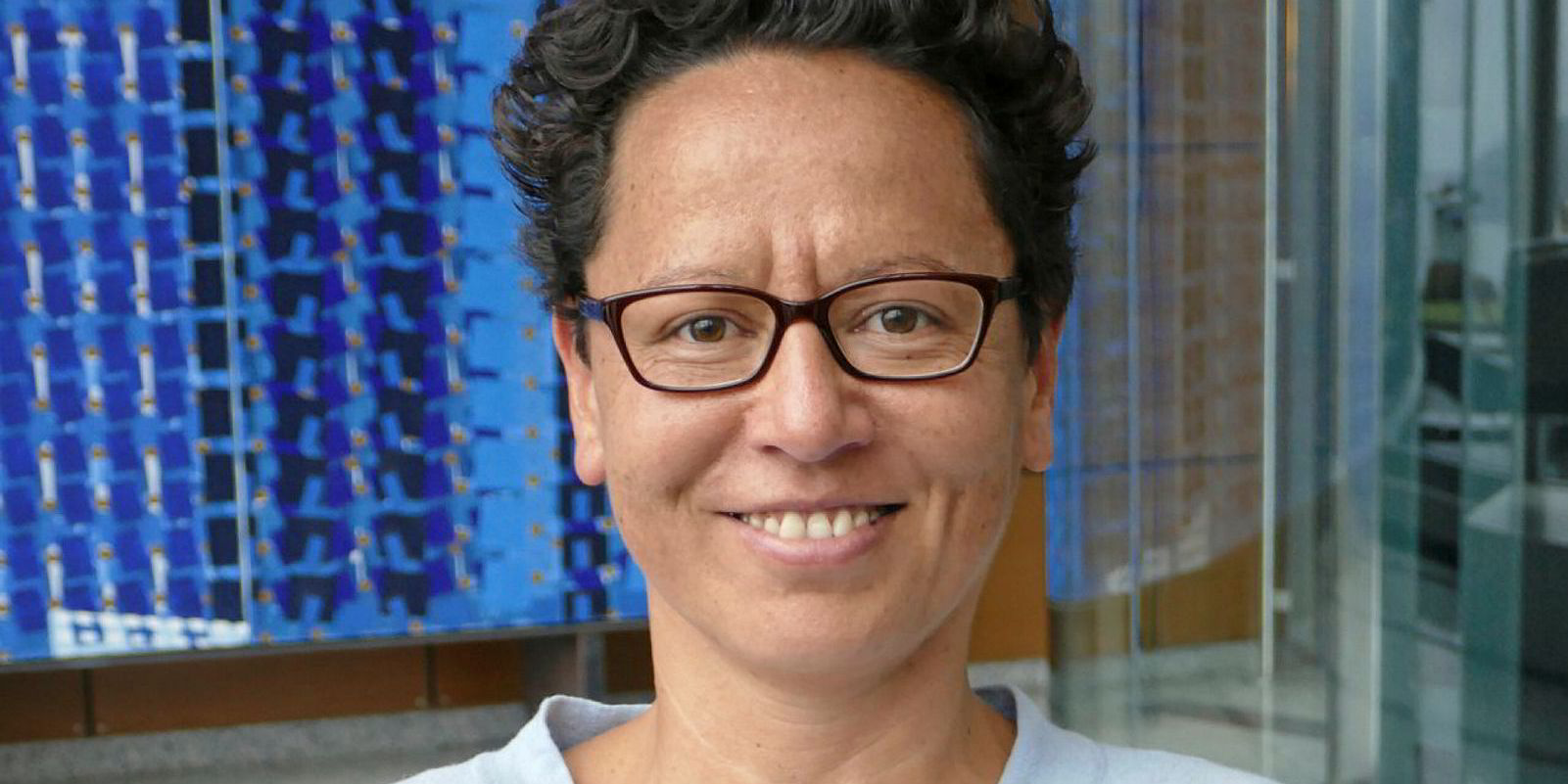
Melanie Moore
Moore, 44, head of sustainability at Wilh Wilhelmsen Holding, was born in Papua New Guinea to a mother from New Zealand and an English father, but she grew up in Brisbane from age 10. The WEF ranks Australia at 35 with 73% gender equality.
“I grew up thinking that all the opportunities were available to me, actually. That was my baseline for everything, that feeling and all of the security that goes with it,” Moore says. She adds that women should feel “very fortunate” in Norway.
Melanie Moore was studying international business relations at university in Australia in her 20s when the class took on the topic of export management and the professor arranged a field trip for an up-close look at a containership at the Port of Brisbane. Seeing the “amazing” vessel and learning about global trade in “a very tangible way” ultimately inspired her to seek work in shipping. Her first job in 1993 was at Wilhelmsen.
In her first real job after university, with Wilhelmsen in Australia in 1993, she could already spot differences between her opportunities and those of her friends who had started in other companies. “I always felt like I had something quite special, actually, in Wilhelmsen.”
Society’s perceptions play a big role in limiting women, according to the UN, but women should also reconsider their own perceptions of themselves, Moore says.
“I think we should all believe that gender equality is a right, and acknowledge that to anyone we meet. We also need to commit to that by going after education and going after the jobs that might seem a bit further than they actually are.
“I’ve heard this from some women, when they don’t believe that they are qualified enough for certain roles, but to me, it’s like, ‘Put your hat in the ring and really push for it’. I’m not so naive to think that just putting your hat in the ring will get you the job, but the experience of doing it over and over will make you better at it and there will be an outcome at some stage.
“So it is about believing it for yourself and believing it for others — that they should also have the right to a good education, to build themselves up, to get great jobs and be professionals. If we all take that type of view, we will raise other people up.
“Just to get great, smart people believing in themselves is the key. There’s plenty of unexplored potential and it frustrates me when I see people who can do great things and just don’t believe it themselves.”
Figures don’t always add up
Wilh Wilhelmsen’s percentage of women employees, which has risen eight points in three years, stacks up fairly well against other companies, at least in the shipping industry.
The Oslo-listed group reports 36% female representation last year, while the figure was consistently about 28% from 2007 to 2015. Women make up 17% of senior management.
The total headcount of 14,630 employees includes 9,460 seafarers, which is a weak point because only 1% of Wilhelmsen’s crews are women. However, only 1%-2% of the world’s 1.6 million seafarers are women, and 94% of them are working exclusively on ferries or cruiseships, according to the International Chamber of Shipping.
In Denmark, AP Moller-Maersk reports that its total group headcount of 85,600 employees breaks down as 26% women in 2017. The highest representation was at logistics company Damco (44%), followed by Maersk Line (32%), APM Terminals (11%) and tug owner Svitzer (8%). In these four companies as a group, women held 16% of executive roles and were 29% of all senior managers.
Women made up 31% of Oslo-headquartered class society DNV GL’s 13,550 staff in 2016 and 22% of its managers. It reports a female-to-male pay ratio of 98.5%.
In chemicals, Oslo-listed Odfjell reported 29% women among its 148 employees in Bergen and 27.7% for its 752 global employees in 2016.
In offshore, Bergen-based shipowner DOF reported female representation of 12% for its 3,900 employees.
For Statoil’s 20,245 workers, the percentage of women was 30% and they held 28% of leadership positions. Statoil says 27% of its engineers were women last year, which is significant because females remain vastly outnumbered in technical fields. It had a pay ratio of 98%.
Key maritime lender DNB shows how the financial sector excels at attracting women. Norway’s largest financial institution reported female representation at 49% last year, among 9,100 full-time positions, although it was 52% in 2016. Women make up 46% of DNB’s group-level executives and 37% of lower management.
DNB reports female-to-male pay ratios across four management levels. At the highest group level, the ratio is 80.5%. Otherwise women earn between 86.9% and 89.9% of what their male counterparts earn in the three lower brackets. Darrin Griggs
